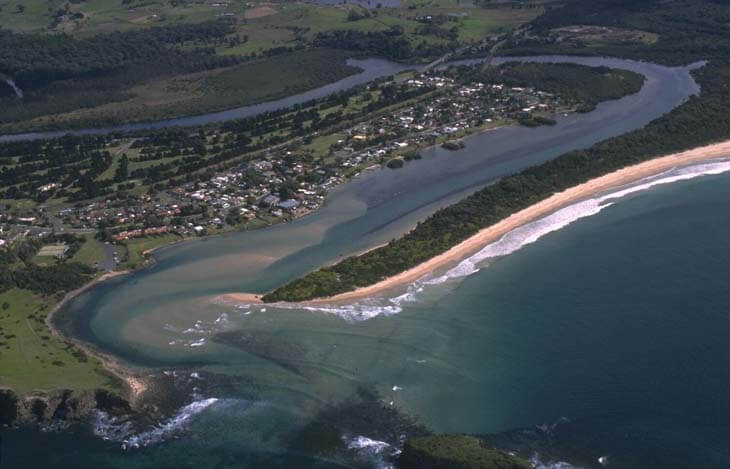Minnamurra River is classed as a barrier river estuary and is located in the Illawarra region just north of Kiama. This estuary supports a large stand of mangroves and swamp oak forests.
The catchment area and estuary are used for agriculture, mineral resourcing, tourism and recreation.
Water quality report card
As part of our water quality monitoring program we assess the water quality and ecosystem health of an estuary using a range of relevant indicators. We sample a subset of the estuaries between Wollongong and the Victorian border every 3 years. The most recent sampling in the Minnamurra River was completed over the 2020–21 summer, when 2 sites were sampled on a monthly basis.
This report card represents 2 water quality indicators that we routinely measure: the amount of algae present and water clarity. Low levels of these 2 indicators equate with good water quality.
Algae
Water clarity
Overall grade
The report card shows the condition of the estuary was good with:
- algae abundance graded good (B)
- water clarity graded excellent (A)
- overall estuary health graded good (B).
Grades for algae, water clarity and overall are represented as:
- A – excellent
- B – good
- C – fair
- D – poor
- E – very poor.
Go to estuary report cards to find out what each grade means, read our sampling, data analysis and reporting protocols, and find out how we calculate these grades.
We have monitored water quality in the Minnamurra River since 2008. This table shows the water quality grades for this estuary over that time.
| Year | Algae | Water clarity | Overall grade |
|---|---|---|---|
| 2007–08 | D | A | B |
| 2011–12 | B | A | B |
| 2014–15 | B | B | B |
| 2017–18 | D | B | C |
Physical characteristics
| Estuary type | Barrier river |
|---|---|
| Latitude (ºS) | –34.63 |
| Longitude (ºE) | 150.86 |
| Catchment area (km2) | 117.3 |
| Estuary area (km2) | 1.9 |
| Estuary volume (ML) | 1516.5 |
| Average depth (m) | 1 |
Tidal prism
Tidal prism data is available for this estuary. This tidal prism was measured in 1992.
| Tide state | Flow (ML) | Local tidal range (m) | Sydney Harbour tidal range (m) |
|---|---|---|---|
| Ebb flow | 1,280 | 1.42 | 1.41 |
| Flood flow | 1,200 | 1.35 | 1.38 |
Notes: km2 = square kilometres; m = metres; m3 = cubic metres; ML = megalitres.
Water depth and survey data
Bathymetric and coastal topography data for this estuary are available in our data portal.
Land use
The Minnamurra River flows through a largely cleared catchment dominated by grazing and rural residential land use. Less than 10% of the catchment is urban and includes Jamberoo and Minnamurra. About 30% of the catchment is forested, which includes Budderoo National Park.
National and marine parks
- The largest conservation area in the Minnamurra River catchment is Budderoo National Park.
- There is no marine park associated with the Minnamurra River estuary.
Community involvement
- Landcare Illawarra support volunteer groups working to improve the environment in this region.

Aerial view of Minnamurra River estuary.
Local government management
Local councils manage estuaries within their area unless the estuary is attached to a marine park. Kiama Municipal Council manages the Minnamurra River estuary.
Threatened species
Minnamurra River estuary and catchment is home to a number of threatened ecological communities, such as the Illawarra lowlands grassy woodland, Illawarra subtropical rainforest and swamp oak floodplain forest. Seagrass beds are also present in this estuary.
Read more about the biodiversity in our estuaries.